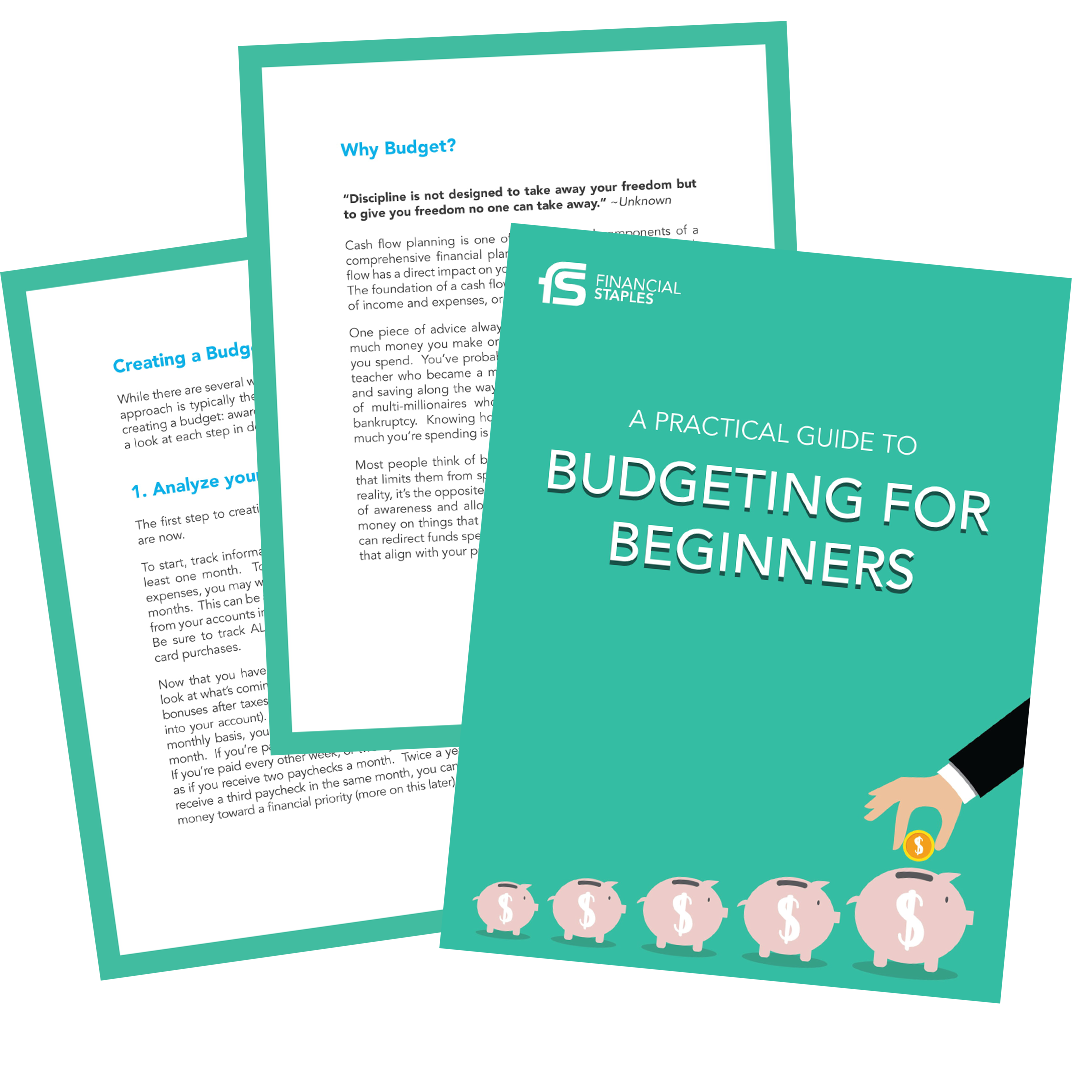I often hear the same questions about financial priorities: Should I pay off debt before I save, or is it possible to do both? How much should I invest in my company’s 401(k)? When does it make sense to contribute to a Roth IRA?
Whether you’re just starting in your career or finally at the point where you have more coming in than going out, it’s helpful to know how to prioritize saving, investing, and paying off debt. With so many financial goals to tackle, and the numerous types of savings account options, it can be hard to figure out on your own. I hope you find my simple guide for prioritizing helpful.
401(k) Up To The Employer Match
You might have money waiting for you! Start by contributing to your company’s 401(k) up to your employer match. For example, your company might match your contributions dollar for dollar up to 5% of your salary. If you put in 5%, they put in 5%. This is an easy way to pay yourself first and take advantage of free money!
Emergency Fund, High-Interest Debt, and Short-Term Savings
Building an emergency fund should be a top priority. Your emergency fund is there to cover unforeseen expenses or a job loss. Having one protects you from blowing up your budget or getting into debt. Start with one month of living expenses and build from there. Aim for at least six months of living expenses long term.
High-interest debt such as credit cards or personal loans can be a drain on your budget. Paying this debt off should also be a top priority! Balance your emergency fund savings with high-interest loan payments.
Do you have any planned expenses coming up in the next three to five years? Set aside additional savings for short-term goals along with your emergency fund. This includes expenses such as a down payment on a home, an upcoming wedding, or an extended vacation.
Since you need easy access to your emergency fund and short-term savings, always keep this money in a high-yield savings account. You never want to be in a situation where you need money and have to sell from your investments when the market is down.
Roth IRAs and Health Savings Accounts (HSAs)
After you’ve started your emergency fund and paid off high-interest debt, contribute the maximum to a Roth IRA and HSA. You’re eligible to contribute $7,000 for the year to a Roth IRA in 2024 if your modified adjusted gross income is less than $138,000 (or $218,000 for married couples filing jointly). If you’re enrolled in an eligible High Deductible Health Plan (HDHP), contribute the maximum to an HSA. In 2024, you can contribute $4,150 for an individual and $8,300 for a family.
While one could argue whether it’s best to contribute to a Roth IRA or HSA first, I suggest prioritizing the HSA. I cover HSAs in more detail in my two-part blog series about open enrollment. You can withdraw contributions made to a Roth IRA at any time tax-and penalty-free. You may also avoid taxes and penalties on earnings under certain conditions. Of course, if you have an emergency fund and short term savings in place, you should use those first.
Top Off Your 401(k)
If you’ve funded all the buckets above and you can still save more, congratulations! Go back to your company’s 401(k) and contribute the maximum. This amount is $23,000 in 2024.
Backdoor Roth IRA
Do you make too much to contribute to a Roth IRA? There’s a way to get money through the back door! First, contribute to a Traditional IRA, then immediately convert the account to a Roth IRA. There are a few rules and considerations (along with proper tax reporting), so make sure you understand how this process works.
Brokerage Account
If you’ve funded all the buckets above and you can still save more, open a taxable brokerage account. I often preach about saving at least 20% of your income (even more if you’re starting late or want to retire early). When you’re a high earner, filling up all the buckets above will add up to less than 20% of your income. A brokerage account is a great way to close this gap. Set up automatic, recurring contributions to a brokerage account so you can build a nest egg for financial freedom.
Now that I’ve explained how to think about financial priorities, I want to make a few caveats. First off, these are general guidelines, and each person’s situation is different. I excluded other debts, such as car loans and student loans. Finally, these guidelines don’t include every type of account or investment vehicle that’s available to you (such as Mega Backdoor Roths or Employee Stock Purchase Plans).
If you got through this entire blog, pat yourself on the back. Knowing how to prioritize saving, investing, and paying off debt can save you stress, time, and money.
Do you need help prioritizing saving, investing, and paying off debt? Not sure how to factor in student loans or equity compensation? Let’s have a conversation!
Did you enjoy reading this post? Want financial inspiration, education, and updates delivered straight to your inbox? Sign up for our newsletter!
Disclaimer: This article is provided for general information and illustration purposes only. Nothing contained in the material constitutes tax advice, a recommendation for purchase or sale of any security, or investment advisory services. I encourage you to consult a financial planner, accountant, and/or legal counsel for advice specific to your situation. Reproduction of this material is prohibited without written permission from Chloe Moore, and all rights are reserved. Read the full disclaimer here.


